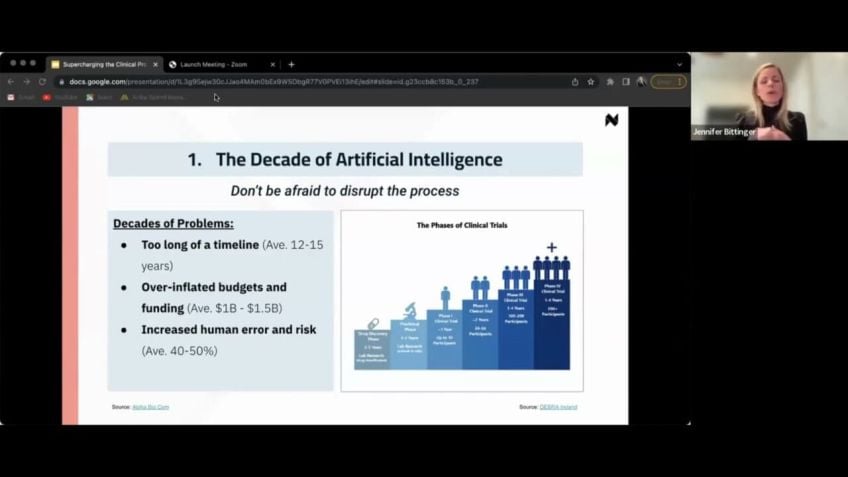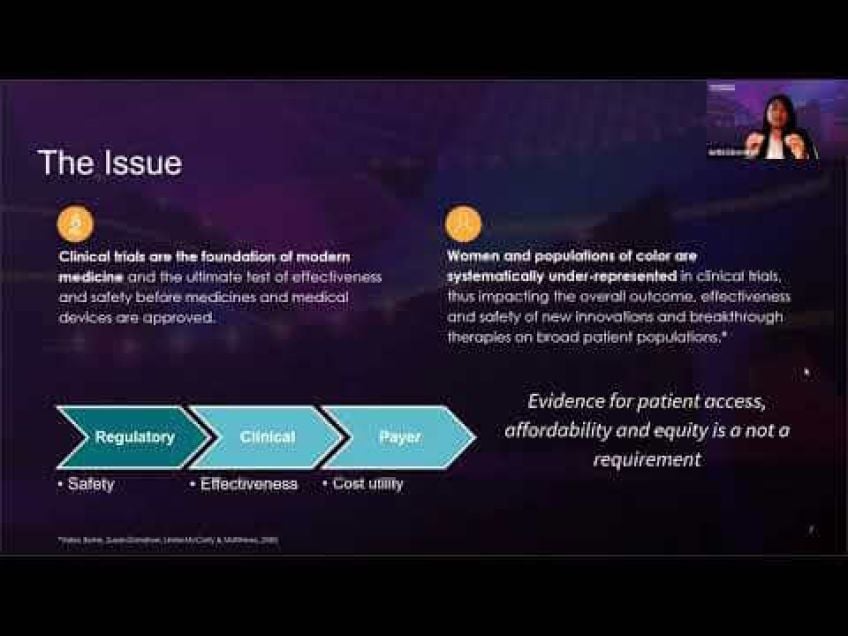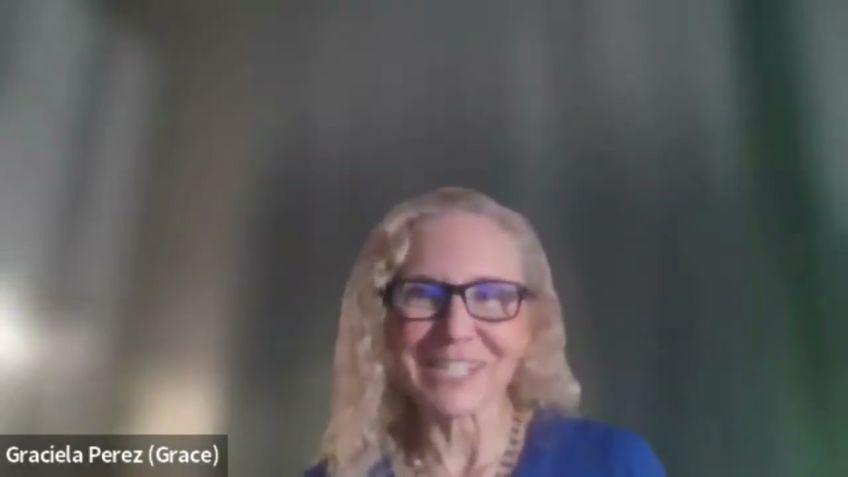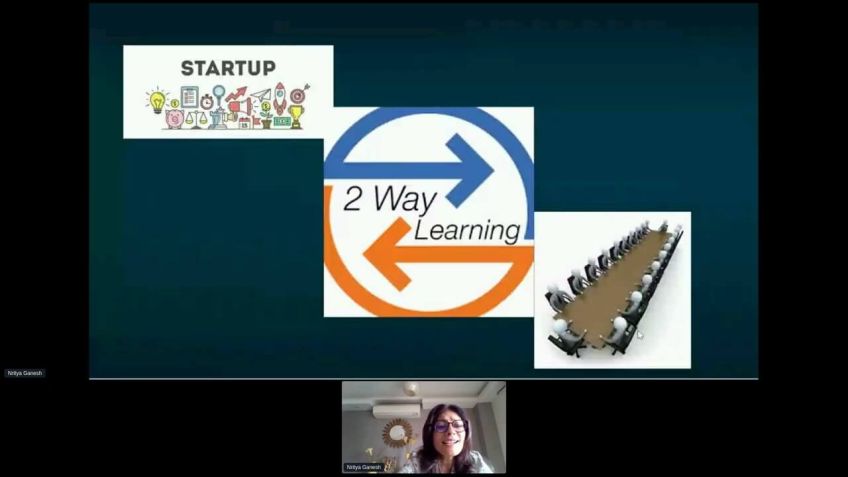HealthTech Innovation and Its Impact on Health Equity by Laura MacMillan
Health-Tech Innovation and its Impact on Health Equity
Hello and welcome! I'm Laura Macmillan, the UX research Manager at Zocdoc. Today, I'm going to discuss how health tech development can address health equity challenges within the complex healthcare system. Specifically focusing on the experiences of the LGBTQ+ community and the solutions we're creating at Zocdoc.
I'd like to express my gratitude to my multiple colleagues who have contributed immensely towards this project. It is indeed a group effort.
Using Zocdoc to Navigate Health Care
Zocdoc, the leading healthcare marketplace, helps six million patients in the USA to book appointments with over 200 types of in-network providers each month. We offer options for both in-person and video appointments. Utilizing our website, users can review doctors, check availability, and book appointments. Just as Expedia, OpenTable, and Booking.com make booking flights, restaurants, and hotels a breeze, Zocdoc does the same for doctors' appointments.
Introducing Zocdoc's Synchronizer Software: FlySync
Our FlySync software makes ZocDoc unique. We have providers from thousands of practices across the country using different Practice Management Systems (PMS) to track their appointment scheduling and patient records. When these practices join ZocDoc, they must communicate their availability to patients. This is where our synchronizer software, FlySync, steps in. It reads a practice's availability database and displays it to patients. We currently integrate with roughly 1400 PMS, each being distinct, and we have a dedicated team ensuring the smooth operation of these integrations.
Our Research Approach
At ZocDoc, we prioritize our patients' well-being. Our recent research was driven by the desire to hear from and understand the unique experiences of different patient communities, particularly the LGBTQ+ community. By addressing their specific needs we aim to avoid perpetuating the same issues that the health care system often does.
The Importance of Egalitarian Health Care
It's vital to recognize the importance of inclusivity and acceptance in healthcare. In a study involving about 5000 patients, a staggering 56% of LGBTQ+ respondents reported instances of being refused care, being touched with hesitation, enduring abusive language, and even being blamed for their health status. As a result, they are seven times less likely to seek future medical care. These experiences have significant impacts on the health outcomes of these communities.
In response to this, our team at ZocDoc interviewed members of the LGBTQ+ community, learning about their needs, preferences, and how their identity has affected their healthcare experiences.
Findings from Our Research
-
LGBTQ+ patients often have lower expectations for their healthcare, leading many to not disclose their identity or avoid doctors altogether.
-
Many patients feel the need to be experts on their own health issues, often due to lack of knowledge or understanding from their healthcare providers.
-
Inclusivity and informed care can have profoundly positive impacts. A simple understanding, like knowing how hormone therapy might affect a trans woman's skin condition, can make a big difference.
-
There is a clear distinction between LGBTQ+ friendly and LGBTQ+ knowledgeable care. Patients appreciate when providers have specific knowledge about their care.
After gathering valuable insights from our research, we focused on revisiting the sex and gender options in our sign-up flow to create a more inclusive and comprehensive platform.
Challenges in Incorporating Gender in Healthcare Data
Improving our sign-up flow is not as simple as adding a gender field and removing the sex field. The Practice Management Systems (PMS) require the sex field for patient matching. Similarly, adding a gender drop-down brings various challenges, as the different PMS have various gender categorization.
Despite the setbacks, the team made considerable progress. After several rounds of brainstorming and consultation with our employee resource group, we revised our signup gestures to be more straightforward with queries and clear distinctions to make our trans and non-binary patients feel more inclusive.
Looking Forward
At ZocDoc, we are investigating multiple strategies to ensure the inclusion and comfort of the LGBTQ+ community from the moment they sign up with us. We are also working on a product called 'Intake', allowing medical practices to upload their demographic forms, many of which are becoming more inclusive.
Our ultimate goal is to create a platform that affirms and respects all identities equally. This is integral as we continue to develop health tech solutions that bring about a higher level of health equity.
Join Us
If you are passionate about making a difference in healthcare, we're hiring! We have open roles in product, design, and tech. Feel free to visit the Zocdoc booth at the virtual conference and reach out to me on LinkedIn for a chat. Thank you!
Video Transcription
So thanks so much for joining this meeting. I know there are a bunch of different talks happening simultaneously. So I really appreciate the folks who decided to join this one. I'm Laura macmillan, I am the UX research Manager at Zocdoc.So the official title of this talk as we submitted it to the conference is health tech innovation and its impact on health equity. So that's not all that specific. So really what this talk is going to be about is how building health, health tech within our complicated health care system is difficult and thorny and absolutely worth it. And I want to share some of the research my team has done with LGBT Q plus patients and the solutions we're working on to help illustrate some of these difficult and interesting problems. So before I dive in, I just want to give a shout out to many of the colleagues that I work with um on this project over time from different departments. Um it was a massive group effort. So just want to say this was not my work alone by any means. So to start off, what is Zoc Doc, I think that will probably make this whole presentation a lot clearer. Zocdoc is the leading healthcare marketplace.
So each month, 6 million patients across the country visit our site to search and book appointments with in network providers. So we offer appointments with over 200 kinds of specialties. Um And we also offer both in person and video visit appointments. In using our site. You can browse reviews uh see availability and also book appointments. So to kind of understand how we work, you can think of Expedia offers booking for flights, restaurants uh are bookable through sites like open table booking.com allows you to book hotels. This is really how you can think about what Zocdoc does for doctors appointments. Uh It's patient initiated directed and it's free for patients as well. So now that that's behind us, I wanna quickly introduce a piece of technology that I think makes Zoc Doc special our synchronizer software which we internally call uh fly sync. So we have providers from thousands of practices across the country on our platform, all of whom use different software called practice management systems or P MS S to track their own schedules and maintain patient records. So when practices join Zoc Doc, they need a way for uh practices and patients to kind of communicate about schedules, which is really where the uh Zocdoc synchronizer technology enters the picture.
So our sync software reads it practices database of availability, allowing Zocdoc to display that availability to patients. So you can think of this as when you call a doctor's office to make an appointment, you hear all the times that they have available, that's essentially what this technology does, taking that information about all the appointment times and displaying it to you. Um On our website, of course, there are different levels of sophistication when it comes to these things. I don't want to overcomplicate it too much, but some write these appointments back into the practice of software. Some are more manual, but the basic concept stands and there are thousands of these practice management systems we integrate with roughly 1400 of them. They're all different. We have an amazing team at Zocdoc whose job it is to make sure those integrations run smoothly. So I'll do my best to kind of describe how that works um as we move through the presentation, but wanted to level set, you understand some of the basics of Zocdoc and one piece of our technology that's going to be really crucial to the story later. So let's go ahead and get into the research. So it Zocdoc, one of our core values is that we always start with our patients first.
So if I can very gently critique uh my own company, to some extent over the years, Zocdoc has really optimized our services, but sometimes we're focused on the average patient, the average provider, but we know that not all patients are treated equally and have equal experiences and outcomes in health care.
So we needed to better understand the experiences of some of these groups of patients. Um And by addressing these needs, we can help to uh avoid perpetuating some of the same problems that the health care system has at large. So in order to do that, we start by listening to them, that's my disposition, that's my field is user research. So we'll share some stories and takeaways from those interviews. But first, I wanted to share a little bit more context on why this is important. So in a study of about 5000 patients, 56% of LGBT Q plus respondents have experienced being refused care providers refusing to touch them uh or using abusive language, being blamed for their own health status or providers being physically rough. Um Perhaps not surprisingly, after experiencing this, they're seven times less likely to seek care in the future. So this has huge ripple effects in terms of health experiences and health outcomes for these populations. So with the help of our Zocdoc team, we spoke with participants in the LGBT Q plus community learning about their health needs, the qualities they seek in a doctor and how their identity has affected these experiences. Uh Of course, these are stock photos that you're looking at.
So I'm gonna be sharing real stories and real perspectives from patients. But because I'm sharing with, with you all, with this external audience, I'm really careful to use stock photos and obfuscate the quotes to protect the research participants. Something that was really exciting about this project is that in order to conduct these interviews, I worked with other members of our employee resource group for LGBT Q plus folks, which is called Z pride. So I identify as queer and I'm trained as a researcher and interviewer.
But it was important for me to bring in broader perspective. So by kind of training up some members of our team on some of the basic basics of interviewing, uh we were able to increase the perspectives we had and one important definition before I get into the findings. Uh When I refer to sex that refers to a person's biological status, which is typically categorized as male, female or intersex. Gender really refers to identity, characteristics of personal identities that are socially constructed. So without further ado digging into some of our research findings, one theme that we heard across the board is that LGBT Q plus patients often will have lower expectations for their health care experiences and sometimes this leads to not disclosing their identity or avoiding the doctor altogether.
One patient often uh doesn't tell doctors he's trans because he finds uh providers who were previously not misgender him will start doing so when they learn this about him, we heard from one non binary trans patient who has avoided going to follow ups for a life threatening issue, which is a, a pulmonary embolism or a blood clot because they felt really dismissed and disparaged by that doctor.
There's also a sense that, uh LGBT Q plus patients have to educate their providers. They have to be experts on their own health issues. Uh, often providers are not experts. So one trans man told us a story. Uh, he was having heart issues, he knew or was pretty sure that it was symptoms of high testosterone levels. He went to the, uh, to the doctor asked them to test him for it. The doctor accused him of abusing the er, the emergency room for hormone therapy. Eventually he was able to convince them to call another doctor with experience with trans patients who tested his levels and yes, found that his testosterone levels were completely off the charts, they were dangerously high. Another trans woman told us a story, uh about uh foot pain she had gone in for uh surgery. She's also happens to be HIV positive when she disclosed her status. The doctor actually uh denied her surgery that day. So you can understand with these experiences, patients are really gonna seek out inclusivity and more uh affirming experiences. Sometimes, you know, some practices that are not specifically LGBT Q plus affirming can offer inclusive care. Absolutely. One patient, a trans woman, she told me this story.
She really lit up when she told us that she saw a dermatologist who wasn't at a queer clinic but uh, just a dermatologist. She found online who knew to ask her about how her hormone therapy might be affecting her skin. And that really brightened her day. However, a foolproof approach, um, or slightly more foolproof approach is going to an LGBT Q plus focus clinic. Um, one patient told us about going to a clinic in DC, Washington DC where he knows he can get prep, easily, prep if you're not familiar is a treatment for reducing your chance of getting HIV. Another goes to a clinic in Austin uh where they know they, they will be asked for their pronouns. A lot of the staff is queer, they feel a lot of comfort when they go there. And I want to drill a little bit into some of the uh kind of nomenclature that we're using here. You might hear people use the terms LGBT Q plus friendly. Uh but I want to make a distinction between friendly and competent or knowledgeable. So LGBT Q knowledgeable care is gonna be specific and informed. So one patient expects um LGBT Q knowledgeable care to offer easy access to prep and blood work in the same facility.
Those two pieces go hand in hand as part of treatment um in other facilities, you might have to go to two places. But understanding the ins and outs of in his case, uh healthcare for gay men, this is a way to feel affirmed, knowing you can get both of those done in, in in the same facility. Um And then also talking about being informed. So another patient, a trans man expects providers to read up on literature, go to conferences. His example was you will strike me as being trans knowledgeable. If you know that a new practice in health care in um trans healthcare is to inject hormones under the skin rather than into the muscle. That's a way for him to, to know that it's also experienced and welcoming. So, one patient really hopes that the providers that she goes to will have seen many trans patients that she won't be the first one. It won't feel like she's kind of being looked at under a microscope and then especially for non binary and trans patients, the importance of the entire experience addressing their identity.
So one trans, non binary patient talked about the process of mentally preparing themselves, psyching themselves up before going into the doctor. Um and that sometimes when they go into the doctor, they because of being misgender or being dead named, which refers to uh provider using their name that they were given uh by their parent uh at birth that they no longer use. So when that happens to them, they will disassociate, they'll forget what's happening during their appointments, which you can imagine it's not ideal for outcomes when you don't have a good recollection of what the doctor told you. So to affirm this person, they're looking for getting pronouns correct throughout the entire process from intake forms to the front desk, staff, to the medical assistant, to the systems that track the information. So we learned so much from this research. What do we do next?
Where do we, where do we start? Um So there are a number of initiatives that we as an organization have been working on, but I want to talk about one piece in particular, a focus area which we look to revisit the sex and gender options we have for patients in our sign up flow to make them more expensive and inclusive.
Why do we start here? This is an area of our product that already exists. We knew the way we were handling. This was not ideal. Um not just through this research but through feedback, we've gotten um online through our amazing customer service team. Um And this research that I just took you through only reinforced the importance of getting this right setting expectations, making patients comfortable from the start is absolutely paramount. So we actually did another round of research much more focused and honed in this time with non binary and trans patients getting their impressions of our existing sign up flow. Uh What it's like to create a zocdoc account to book appointments. We tested the sex assigned at birth copy that uh we asked patients to fill out and a new proposed tool tip to explain why we were asking for it. We learned a lot but just to quickly summarize patients appreciated this tool tip. I I have it highlighted here in red. That kind of explains why we're asking for it. But ultimately, it just wasn't enough. Um One patient who is non binary described it as gender needs to be a part of this. If you provide sex or sex behind at birth, you still have to provide the other um you have to ask gender or pronouns um and you know, sex assigned at birth. What does that mean? Are we talking about my genitalia?
Are you talking about my experience moving through the world? Which kinds of providers and which kind of specialties would even need to see this, right? So opening up a lot of questions. So OK, so easy, right? We know that we need to ask patients for their gender. Let's just slap on a gender field in our sign up flow and call it a day, right? Easy. Of course, it's not so simple. So we led a brainstorm as a cross functional group, talked about a few different ways for how we could treat sex and gender in that sign up flow, listing out the pros and the cons and the unknowns of these uh paths. One simple, you might call it elegant solution would be to just remove sex entirely from our sign up and booking flows. But we learned in discussing with our engineering team who leads our sync integrations that P MS S those practice management systems use sex as uh an input to something called patient matching. So in our more sophisticated sync products that book zocdoc appointments directly into a practices systems, key pieces of a patient's information including sex are matched against the existing uh patients and that practices database that matching does two things ensures that a new patient record isn't created in a practices system.
If there already is a record of that patient, that patient's been there before, or that an old patient record in the practices system isn't overwritten by this new OC doc booking. You can imagine they're both bad. Uh one sort of from a logistics perspective and especially the second from a hi a perspective, we don't want to be rewriting into patients records. So this is really really an area where we have to tread lightly and make sure we're executing um with a lot of care. OK. So starting to understand how hard and how complicated these things are. So what if we keep sex as a necessary field to fulfill this requirement, but just add a gender drop down. So bringing back our practice management systems continuing to complicate things um that I mentioned earlier, these come kind of come into play here. So every P MS is different and stores information differently, some have a gender field in addition to a sex field, many don't.
Uh and even those that do have a gender field have different gender categories. So an interesting historical note. Uh uh Many P MS S are built off some of the original technology uh of electronic health record systems that began to be developed back in the seventies. So you get some of the notions from that time around identity that um are kind of baked into the databases themselves. So many of these are are adapting and changing, but it's not a universal uh change across the board. So we needed to get further into the weeds of a technical solution. How could we use the information available to us within the P MS to make sure a patient's gender is captured and then properly sent to the practice. So not every P MS has a gender field as I mentioned, but they typically do have a generic notes field. So one solution could be to pass the gender into that notes field, simple, easy, right? Um But because of limitations within these pieces of software, the notes field is used for some other important information like patient insurance, also further complicating things, a lot of P MS S have character limits. So the team was concerned that the notes field might actually cut off uh additional gender information if we were to pass that through. So what's really exciting?
Um And really was was such a wonderful thing about this project is that the team actually dedicated the time, put aside the time to research all these products that we integrate with to get an estimate of how often gender could be passed through this um through this notes field.
Uh And from preliminary research from the team, it seems like the majority of the time they could be passed along. So that's a really great sign. Meanwhile, while some of this work was going on, we also consulted with our employee resource group Z Pride who gave some really great recommendations on how to improve the experience while we do research on um the larger changes to gender. So if you think about what we're really asking for in the sign up field, it's really just asking for what sex is listed on the patient's medical insurance or patient health record for that matching um requirement. It's not really sex assigned at birth because sex assigned at birth doesn't always match the patient's actual record. They um in the case of uh trans or non binary patients, they may have actually changed their legal sex. So, so prizes recommendation is say what you're actually asking for update this to um to sex with a explanatory tool tip saying look this is sex for clinical use. It's gonna be the one listed on your medical insurance or your health records. Um Just to get that clear definition to be inclusive of our trains and non-binary patients. So to wrap up, uh we have a few directions we're exploring. One is a product I haven't mentioned to you all yet. Um It's a product called intake.
It allows practices to upload their own medical and demographic forms and many of these forms are becoming more inclusive. So it'll be clear to patients when they, when they fill these out, uh which practices are going to be a little bit more inclusive. The other directions are the ones that I've mentioned. So, working on that, sign up, copy and further refining how we can successfully capture gender. So I know we're just about a time here. It really does wrap up what I wanted to share with you all today. Um But a few pieces of housekeeping zocdoc will be in the ex expo booth throughout the virtual conference. My amazing colleague, Anal will be leading a meet and greet on Thursday at 12 pm Eastern time and we'll also be at the in-person career fair uh um in New York City on Friday. So if any of this work is interesting to you, we're also hiring uh we have open roles in product and design and in our tech org. Um And I will go ahead and drop a link to that as well. I know we ran out of time so I didn't get a chance to ask any questions but feel free to reach out to me on linkedin if you wanna chat any further. Thanks.





